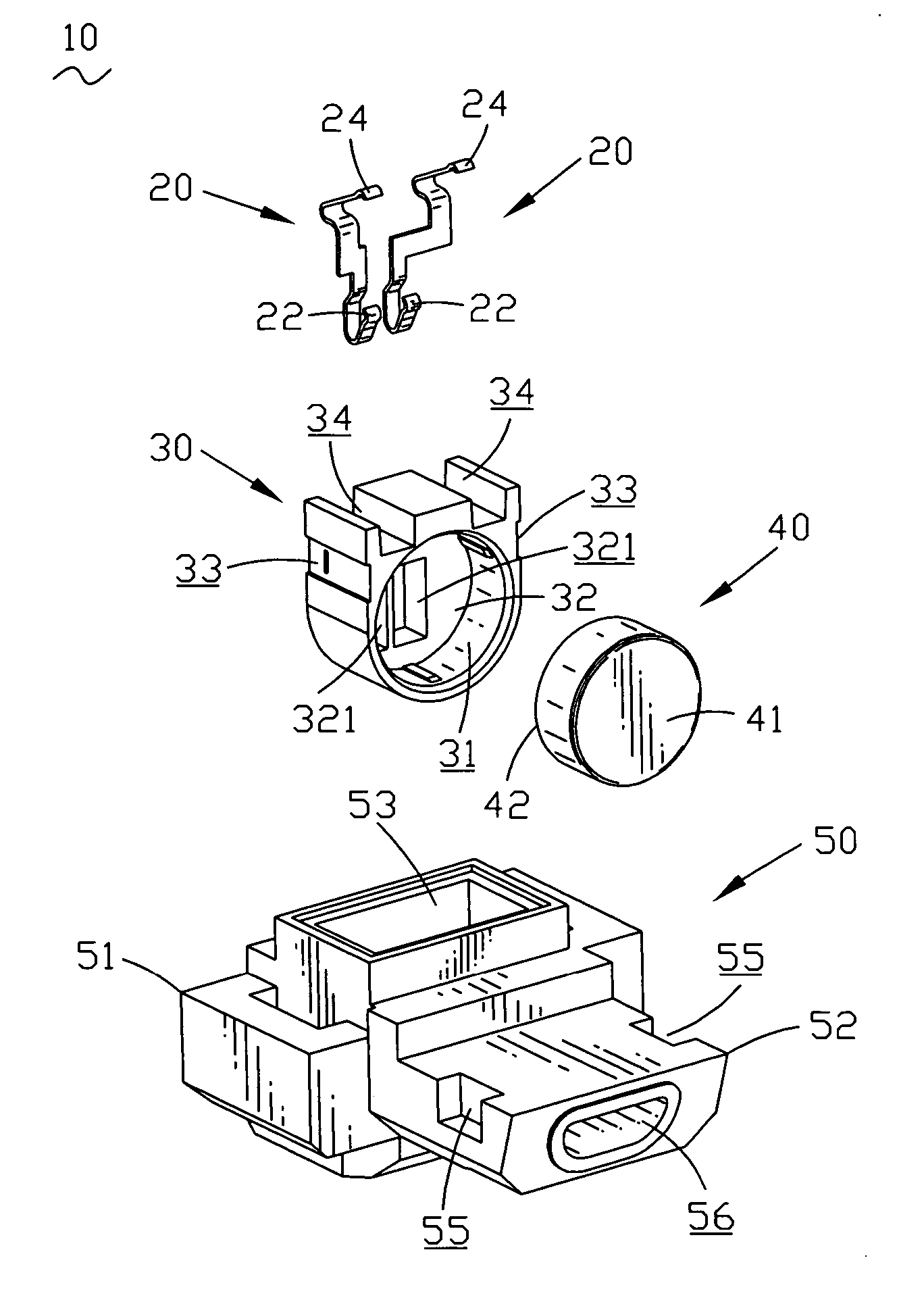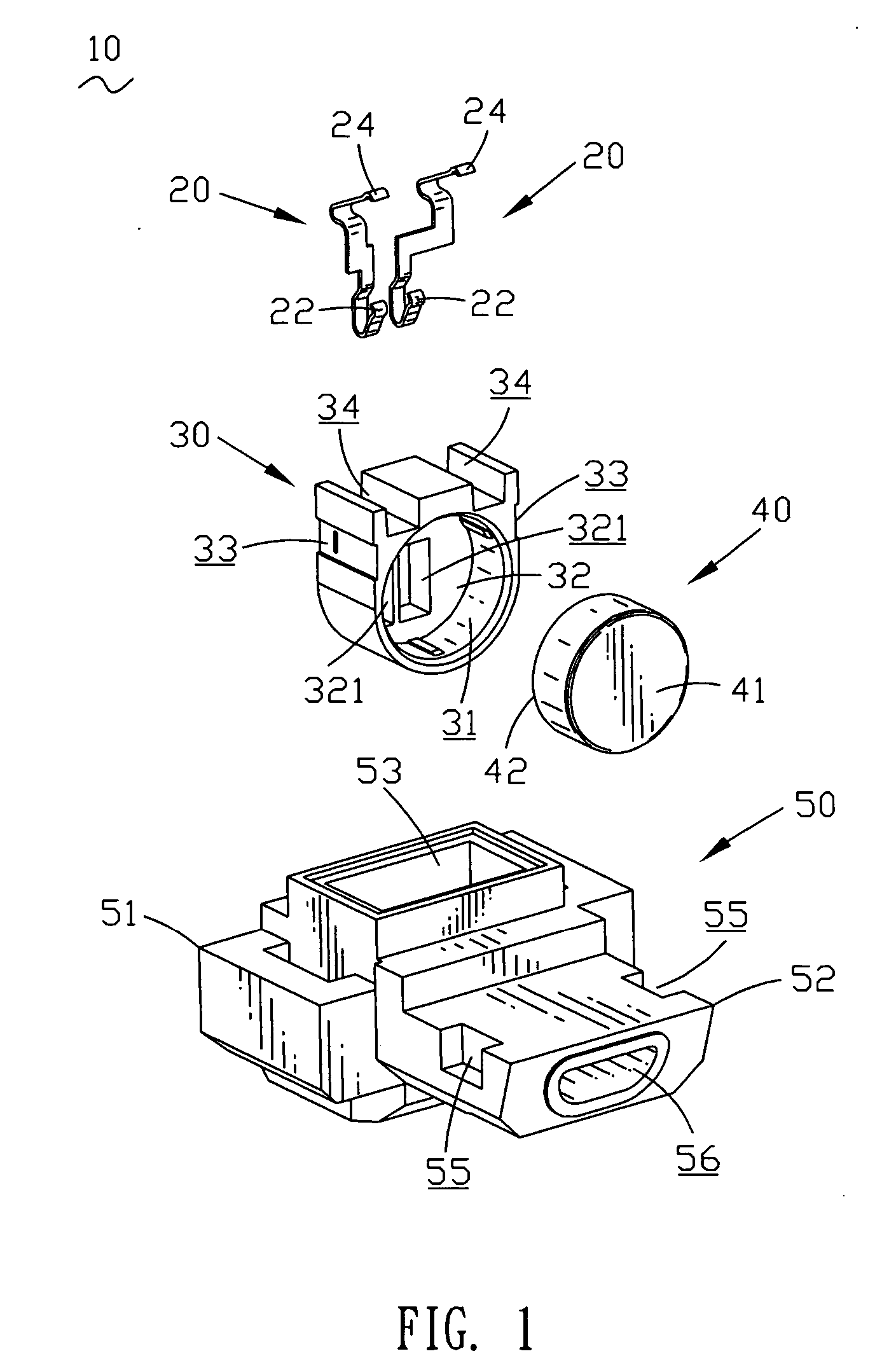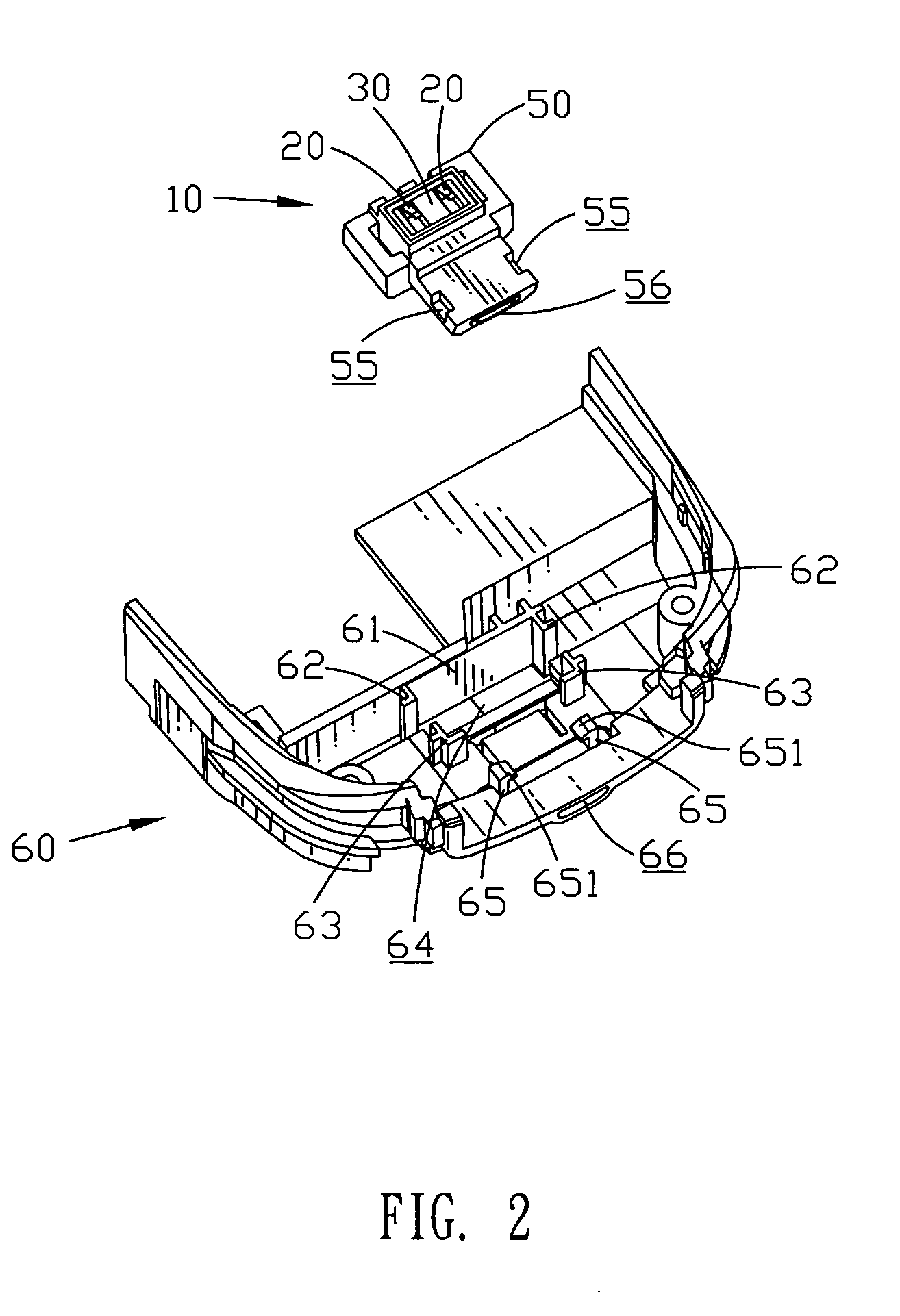Microphone connector module
- Summary
- Abstract
- Description
- Claims
- Application Information
AI Technical Summary
Benefits of technology
Problems solved by technology
Method used
Image
Examples
Embodiment Construction
[0013] Referring to FIG. 1, an embodiment of a microphone connector module 10 in accordance with the present invention is shown. The microphone connector module 10 comprises a pair of terminals 20, a body 30 receiving the terminals 20, a microphone 40 received in the body 30, and a casing 50 receiving the body 30.
[0014] As shown in FIG. 1, the microphone 40 defines a receiving face 41 and a contacting face 42 opposite to the receiving face 41.
[0015] The terminals 20 are received and fixed in the body 30. The bottom portion of the terminal 20 is bent to form a first elastic portion 22 for pressing the contacting face 42 of the microphone 40. The top portion of the terminal 20 is bent to form a second elastic portion 24 for pressing an external printed circuit board (PCB, not shown).
[0016] The body 30 defines a cylindrical cavity 31 for receiving the microphone 40. The back portion of the body 30 defines a back wall 32 as a bottom of the cylindrical cavity 31. The back portion of t...
PUM
 Login to View More
Login to View More Abstract
Description
Claims
Application Information
 Login to View More
Login to View More - R&D
- Intellectual Property
- Life Sciences
- Materials
- Tech Scout
- Unparalleled Data Quality
- Higher Quality Content
- 60% Fewer Hallucinations
Browse by: Latest US Patents, China's latest patents, Technical Efficacy Thesaurus, Application Domain, Technology Topic, Popular Technical Reports.
© 2025 PatSnap. All rights reserved.Legal|Privacy policy|Modern Slavery Act Transparency Statement|Sitemap|About US| Contact US: help@patsnap.com



